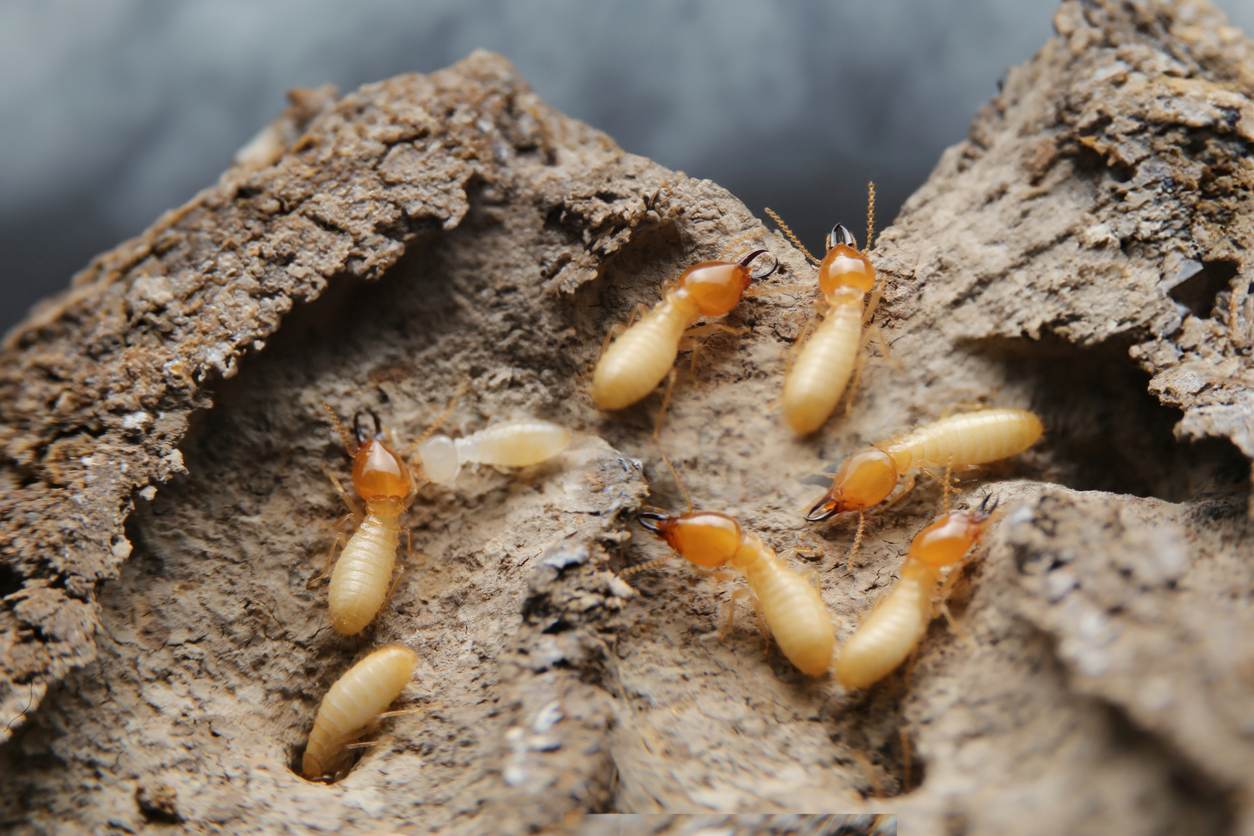While having ants around your home can be annoying, it’s far more alarming to discover termites have invaded your living space. Knowing the difference between these insects can help you get the right treatment and prevent damage. Let our team at Dewey Pest and Termite Control show you how to tell the difference between termites and ants.
What Is the Physical Difference Between Ants and Termites?
The most common way to differentiate these two insects is through their physical appearance. If you’re wondering if you have ants in your home, look for the following traits to distinguish them from termites:
- Narrow waists
- Dark black, brown, or reddish-brown bodies
- Bent antennae
Termites may live in colonies and have a queen like ants do, but their physical appearances are distinctly different. Typical termite traits include:
- Broad waists
- Straight antennae
- Lighter brown, black, yellow, or white bodies
The average ant ranges from .08 – 1 inch, whereas the average termite size ranges from 1/4 to 1/2 inch.
Flying Ants vs. Termites
While adult ants and termites have more unique appearances, it’s easy to confuse these species when they’re in their swarming phase, when reproductive ants or termites grow wings to fly away and form new colonies.
To differentiate flying ants versus flying termites, you’ll have to look at the wings. Both winged ants and termites have two sets of wings. Termite wings are uniform in size, while ants have large forewings and small hindwings. If you’re able to catch this difference, you’ll get a headstart in knowing how to get these pests out.
Do Ants and Termites Act Differently?
There are distinct differences in how termites and ants act. One way to determine if you have a specific type of ant or termite problem is by examining the wood they infest.
Carpenter ants, which are commonly confused with termites, are attracted to moist, damaged wood. They don’t actually eat the wood—they tunnel through it to help their colony grow and travel. Ants instead eat sugars and proteins, often found in eating other insects.
Termites, on the other hand, feast on dry and healthy wood and cause significantly more damage to your property. They simultaneously tunnel and feed through your walls, beams, and even floorboards as they feed on the cellulose in your wood.
Do Ants and Termites Cause Different Damage?
Ants and termites both infest wood but cause different types of damage due to their unique nesting and feeding habits. Ants often leave behind smoother tunnels and paths as they build their nests, while termites actively eat the wood and create more widespread, swift damage.
How Do I Get Rid of Termites and Ants?
Despite the overlap in prevention methods, termite and ant control do emphasize different aspects. Termite prevention involves more with reducing wood-to-ground contact and eliminating moisture. Ant control primarily involves sealing entryways and eliminating open food sources.
One common area between ant and termite control is what brings the best results: professional pest control from Dewey Pest and Termite Control. When you choose our team, we’ll inspect your property and provide effective, regular treatments to help you regain your peace of mind.
Remove Termites and Ants With Dewey Pest and Termite Control
Don’t let a termite or ant infestation take a toll on your home—get the best pest control services at Dewey Pest and Termite Control. Since 1929, our team has tackled ant and termite troubles, big and small, for our friends and neighbors across California. Contact us online or by phone to receive your free ant and termite control quote today!

